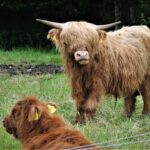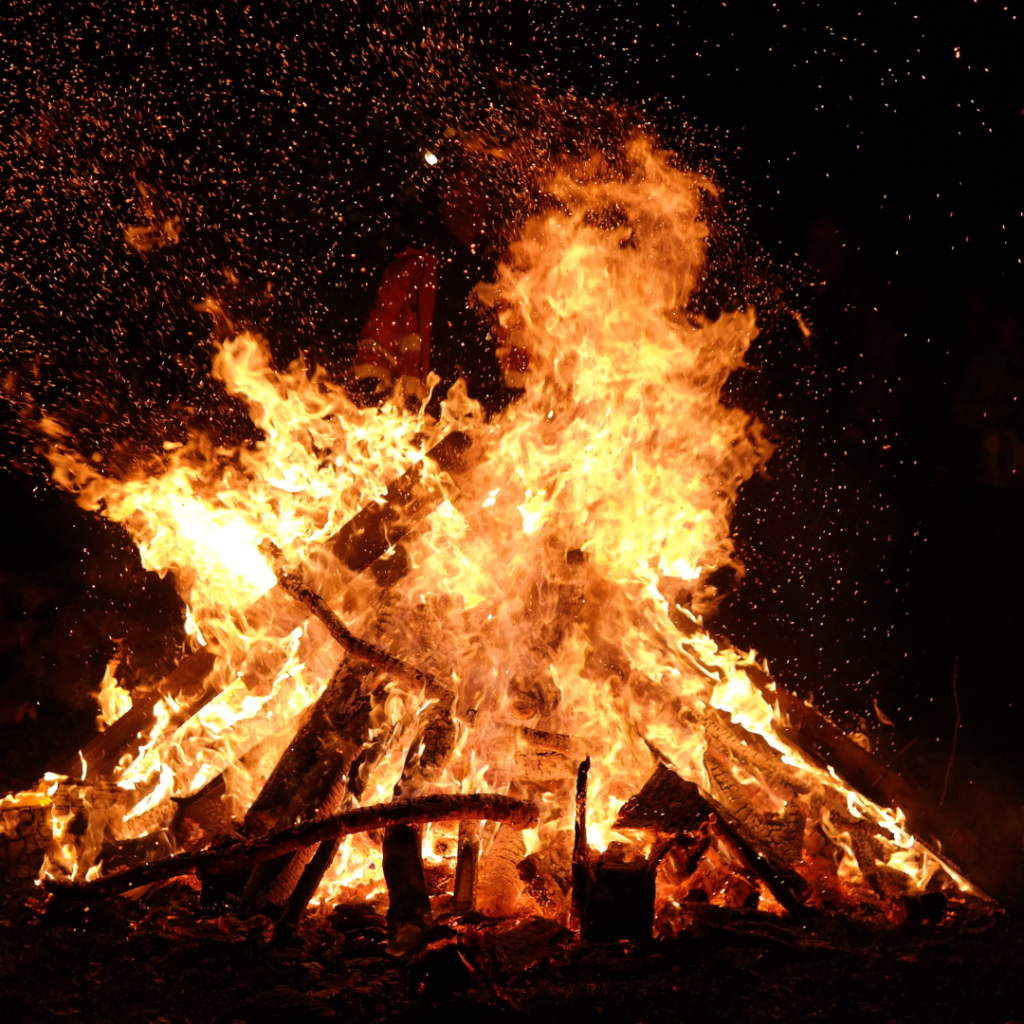Sunday was the first of May, and our village returned to its annual May-Day  festival after a two-year hiatus because of the pandemic. Situated on the square as we are, it was practically in our front yard. These days, it is full of beer and bratwurst, but there was dancing around the maypole in the past, and the neighboring villages tried to steal each other’s pole. I remember decorating a May Pole in school as a child and then dancing around it. Do they do that anymore?
festival after a two-year hiatus because of the pandemic. Situated on the square as we are, it was practically in our front yard. These days, it is full of beer and bratwurst, but there was dancing around the maypole in the past, and the neighboring villages tried to steal each other’s pole. I remember decorating a May Pole in school as a child and then dancing around it. Do they do that anymore?
Every culture seems to have a celebration marking the beginning of summer. For the ancient Celts, this day was known as Beltane, commemorating one of the four fire festivals of the year. Falling halfway between the spring equinox and the summer solstice, Beltane marks the season of light when the days grow longer.
 The weather was safe to move the sheep and cattle up into the high meadows for their summer grazing. To ensure the health of their animals, the shepherds drove them through the smoke of the Beltane bonfires before driving them up into the fields. There are mentions of this tradition in the earliest writings of the Celtic people, but this would have existed long before they began keeping written records.
The weather was safe to move the sheep and cattle up into the high meadows for their summer grazing. To ensure the health of their animals, the shepherds drove them through the smoke of the Beltane bonfires before driving them up into the fields. There are mentions of this tradition in the earliest writings of the Celtic people, but this would have existed long before they began keeping written records.
Other rituals around the bonfire were meant to protect the people and the crops. While specific details vary from area to area, most were similar in the basics. They spent the day gathering flowers for decorating and baking for the celebrations. They favored the yellow flowers as they resembled the flames of the fire. Many cultures had rituals involving food, such as the Scottish baking of the bannocks, a bread that would be blessed over the fire and broken up for all to partake.
In the evening, before they left their homes, all fires would be extinguished to be rekindled the following morning with embers from the Beltane bonfire, bringing its blessings of health and prosperity to the household.
Seeds from the previous year’s crops were tossed into the fire for a bountiful harvest in the coming season. The people themselves danced through the smoke, believing in the protective powers it provided. And, of course, a share of the food and drink was given to appease the sìdh, the fairies, to keep them happy and repel the evil spirits. In the morning, the young maidens washed their faces with the morning dew to ensure they maintained their youthful beauty.
believing in the protective powers it provided. And, of course, a share of the food and drink was given to appease the sìdh, the fairies, to keep them happy and repel the evil spirits. In the morning, the young maidens washed their faces with the morning dew to ensure they maintained their youthful beauty.
One of my favorite bits of research for Secret of the Old Tower was discovering records of these ancient festivals still being celebrated in 18th century Scotland. John Ramsey, a Scottish writer at the time, described the festival he attended as a guest. He was particularly interested in the bannocks and noted that the farmers cut holes in them and milked their cows through the opening. In his 1769 A Tour of Scotland, Thomas Pennant wrote about the folk pouring a libation on the ground to bless their animals and spilling an extra few drops for the predators to spare their beasts from harm.
And while there was no bonfire here in Bavaria on Sunday, according to my landlady, this marks the day it is safe to plant my garden as a hard frost after this point is rare.
How do you celebrate the coming of summer?
